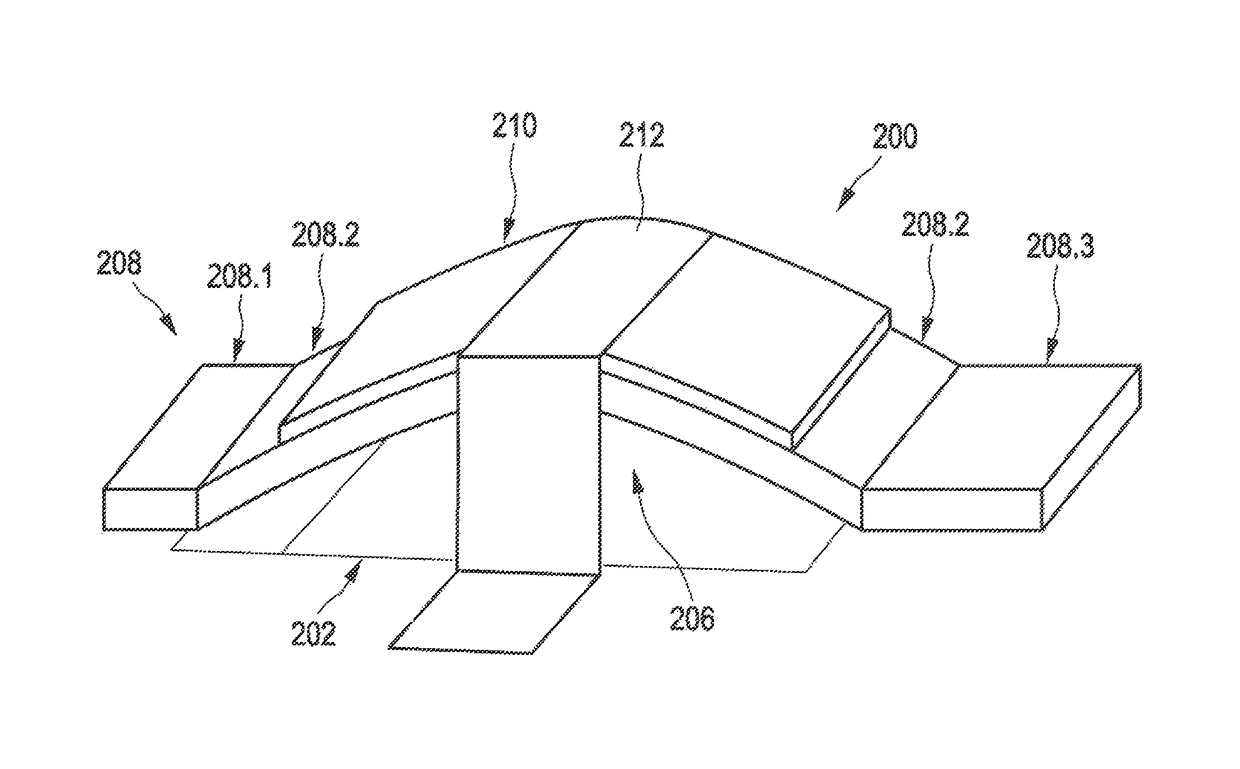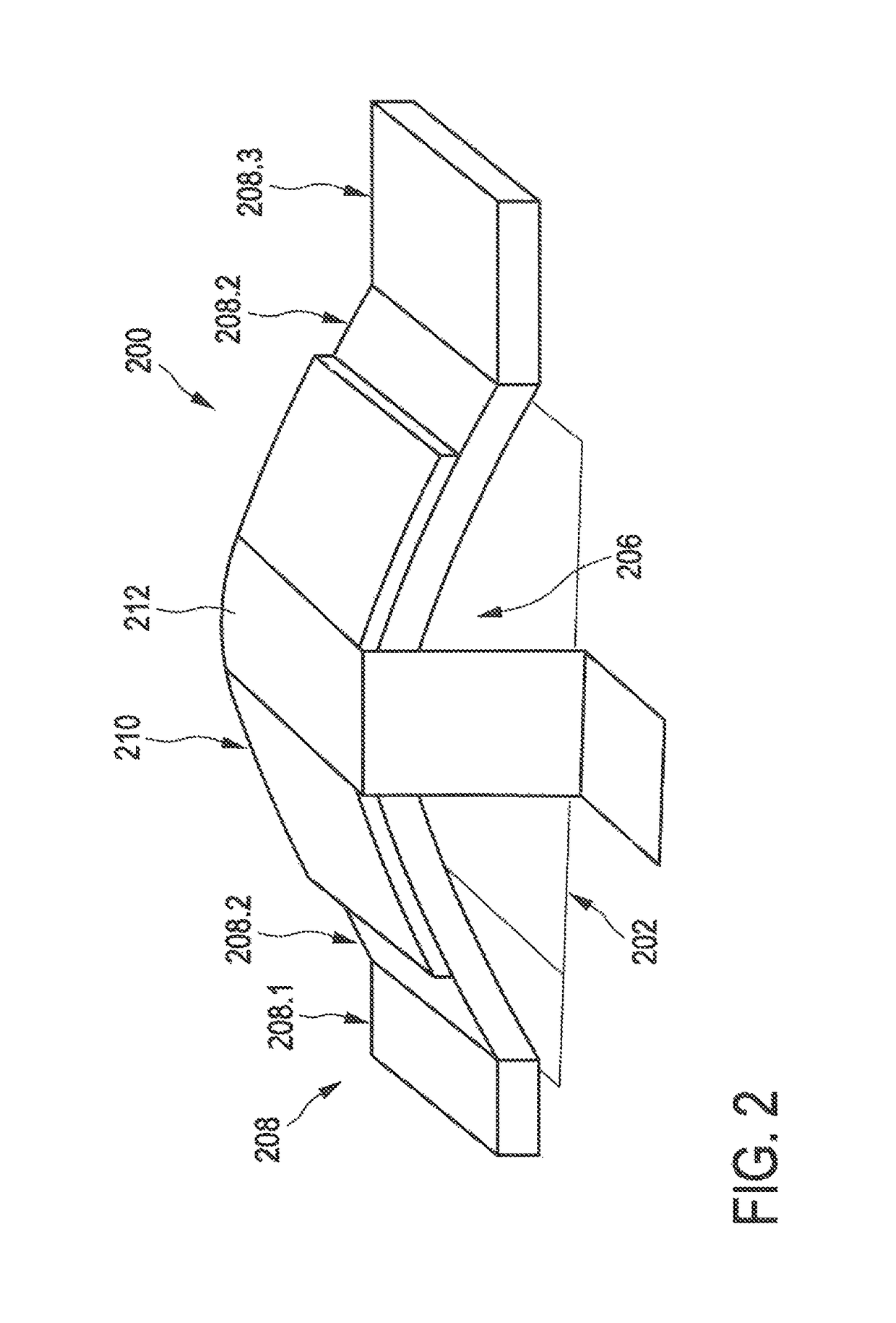CMOS-compatible germanium tunable laser
- Summary
- Abstract
- Description
- Claims
- Application Information
AI Technical Summary
Benefits of technology
Problems solved by technology
Method used
Image
Examples
Embodiment Construction
[0057]FIG. 1 shows a schematic cross sectional view of an embodiment of a light emitter device 100. The graphical representation of FIG. 1 is simplified in that only a lateral section of the device is shown. However, since the device is symmetrical, the parts not shown do not contain structural features differing from those shown in the Figure. The symmetry is of mirror type, and the position of the mirror plane M, which extends perpendicularly to the cross-sectional plane of FIG. 1, is indicated at the right edge of FIG. 1. Horizontal dotted lines at the left and right edges of the layer structure are provided to more clearly show the respective position and thickness of the individual layers in layer structure of the light emitter device 100. A further simplification of the graphical representation in FIG. 1 is that only structural elements are shown, which are essential to understand the structure of the present embodiment. In particular, no contact structures are shown.
[0058]In ...
PUM
 Login to View More
Login to View More Abstract
Description
Claims
Application Information
 Login to View More
Login to View More - R&D
- Intellectual Property
- Life Sciences
- Materials
- Tech Scout
- Unparalleled Data Quality
- Higher Quality Content
- 60% Fewer Hallucinations
Browse by: Latest US Patents, China's latest patents, Technical Efficacy Thesaurus, Application Domain, Technology Topic, Popular Technical Reports.
© 2025 PatSnap. All rights reserved.Legal|Privacy policy|Modern Slavery Act Transparency Statement|Sitemap|About US| Contact US: help@patsnap.com



